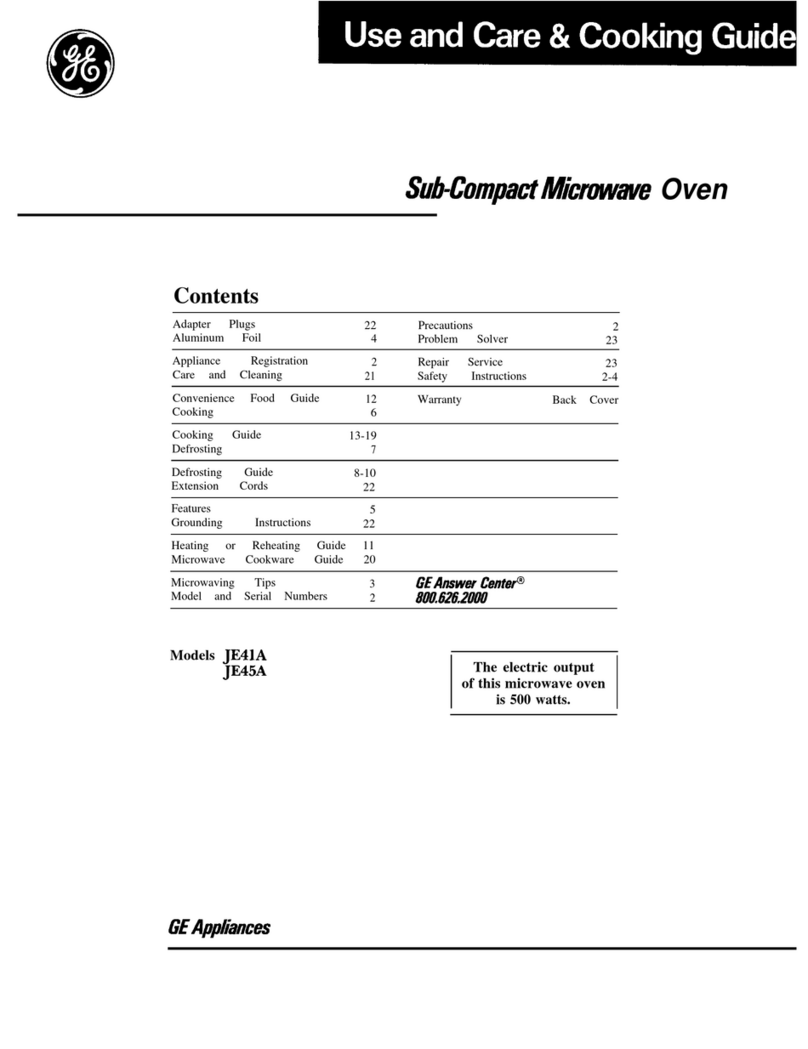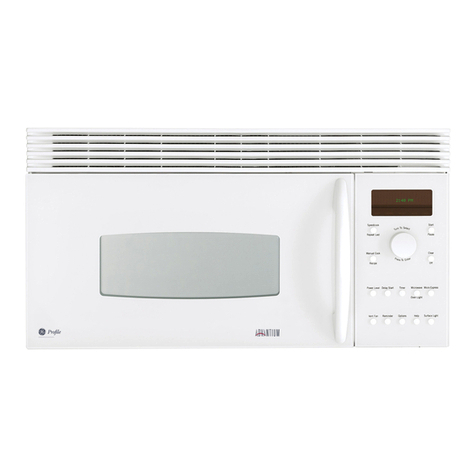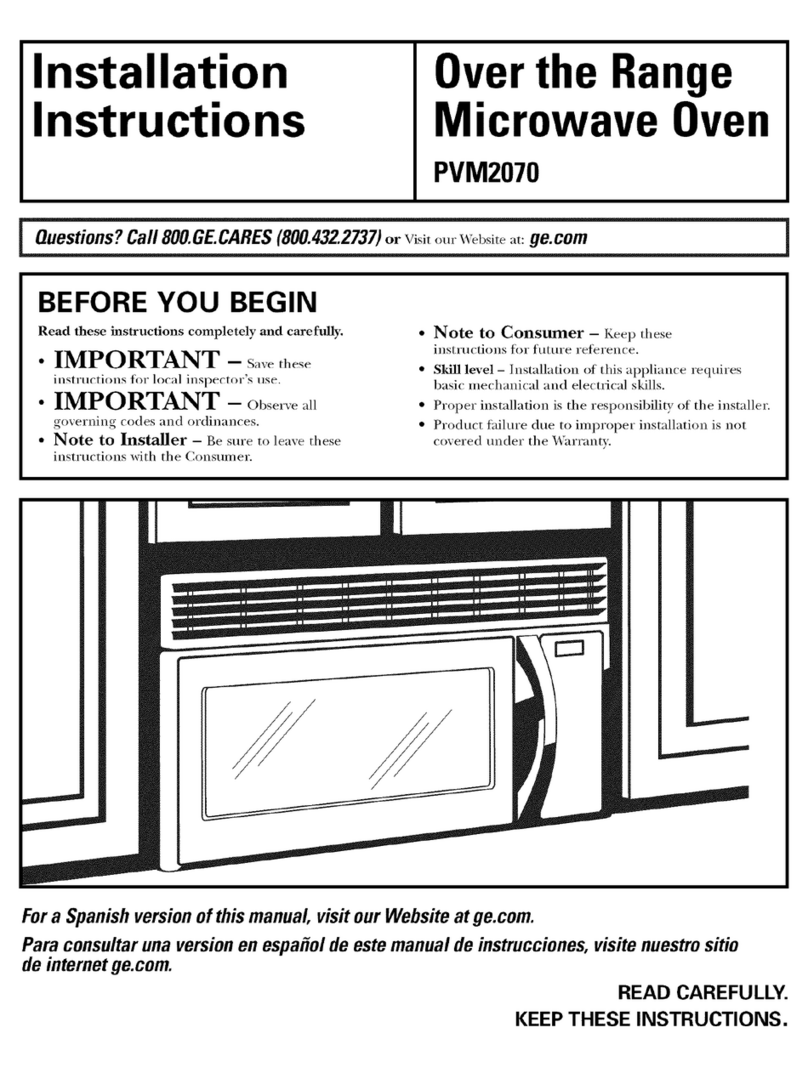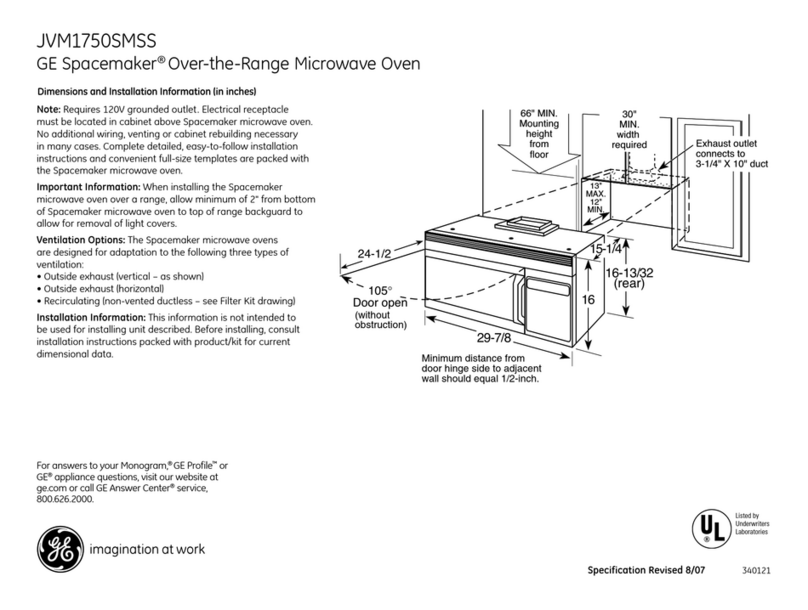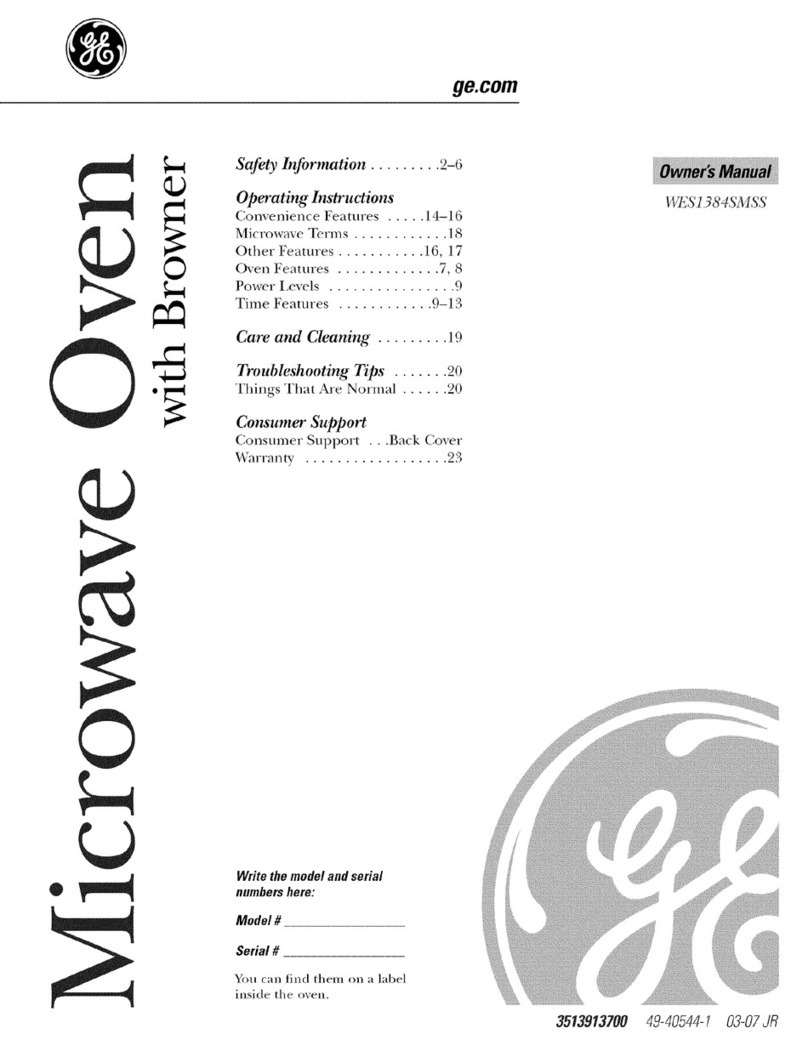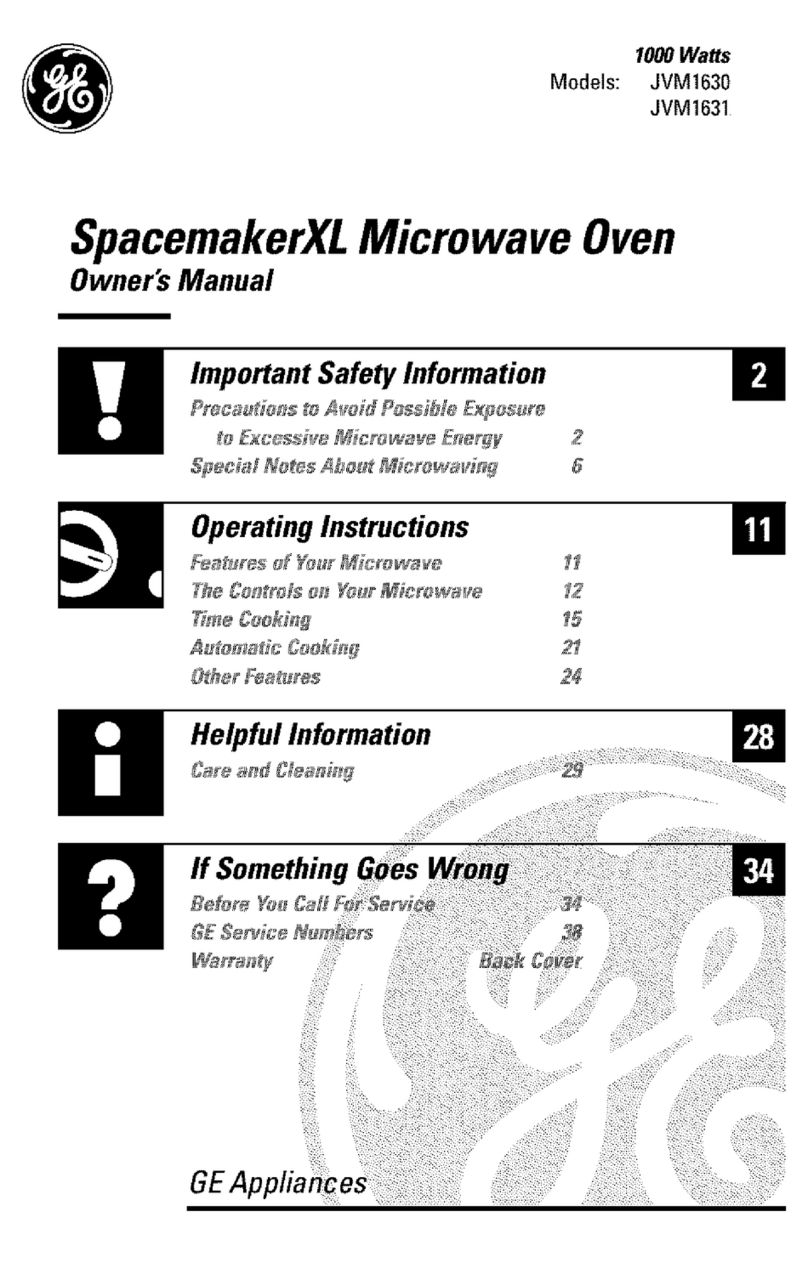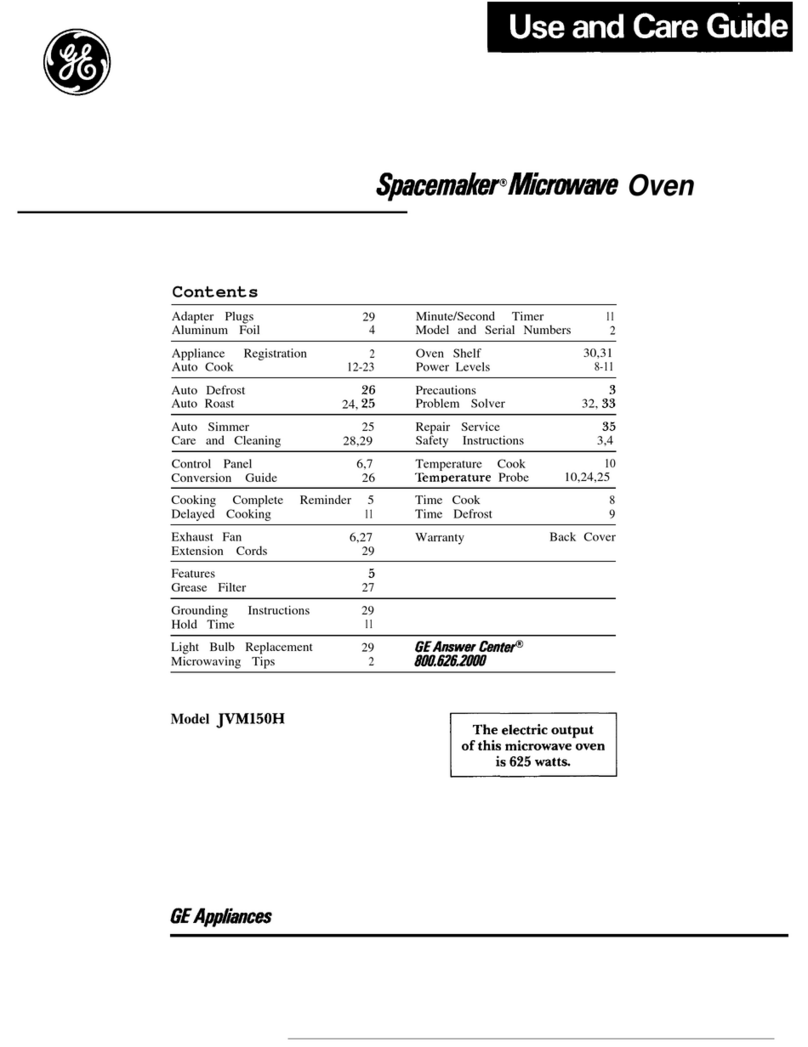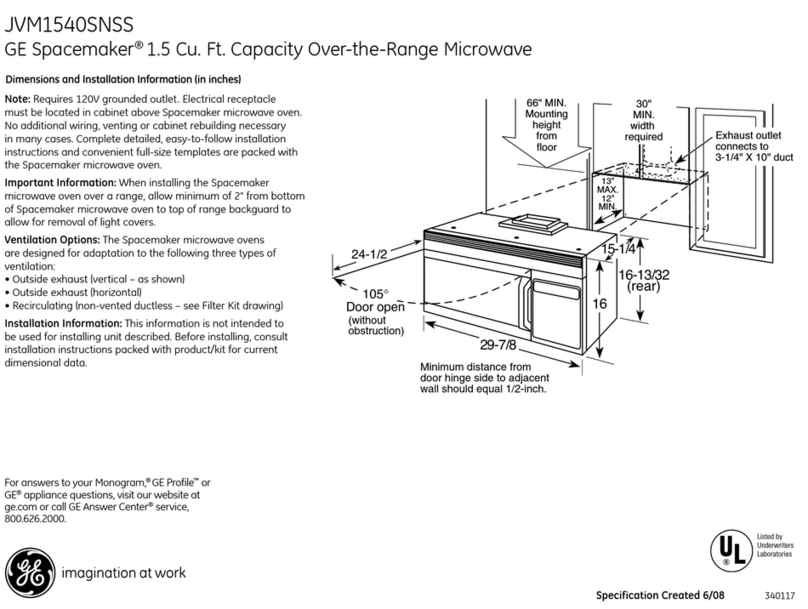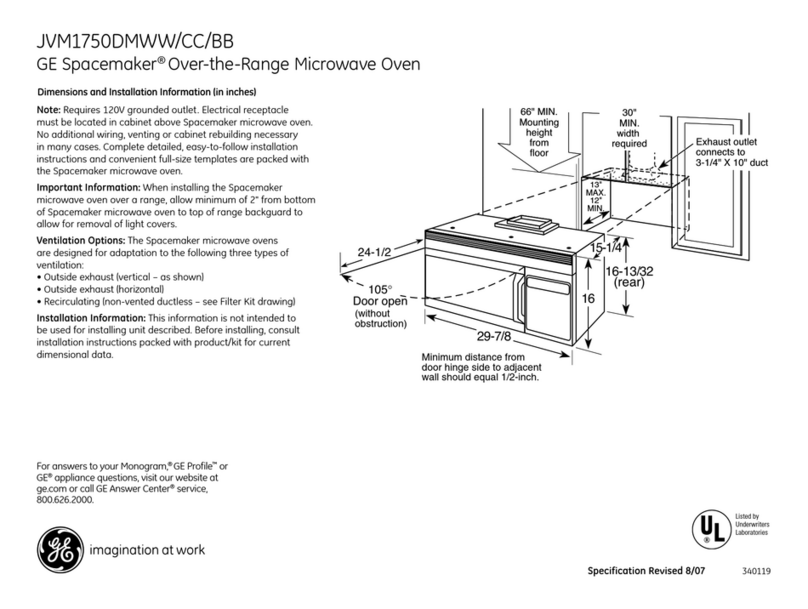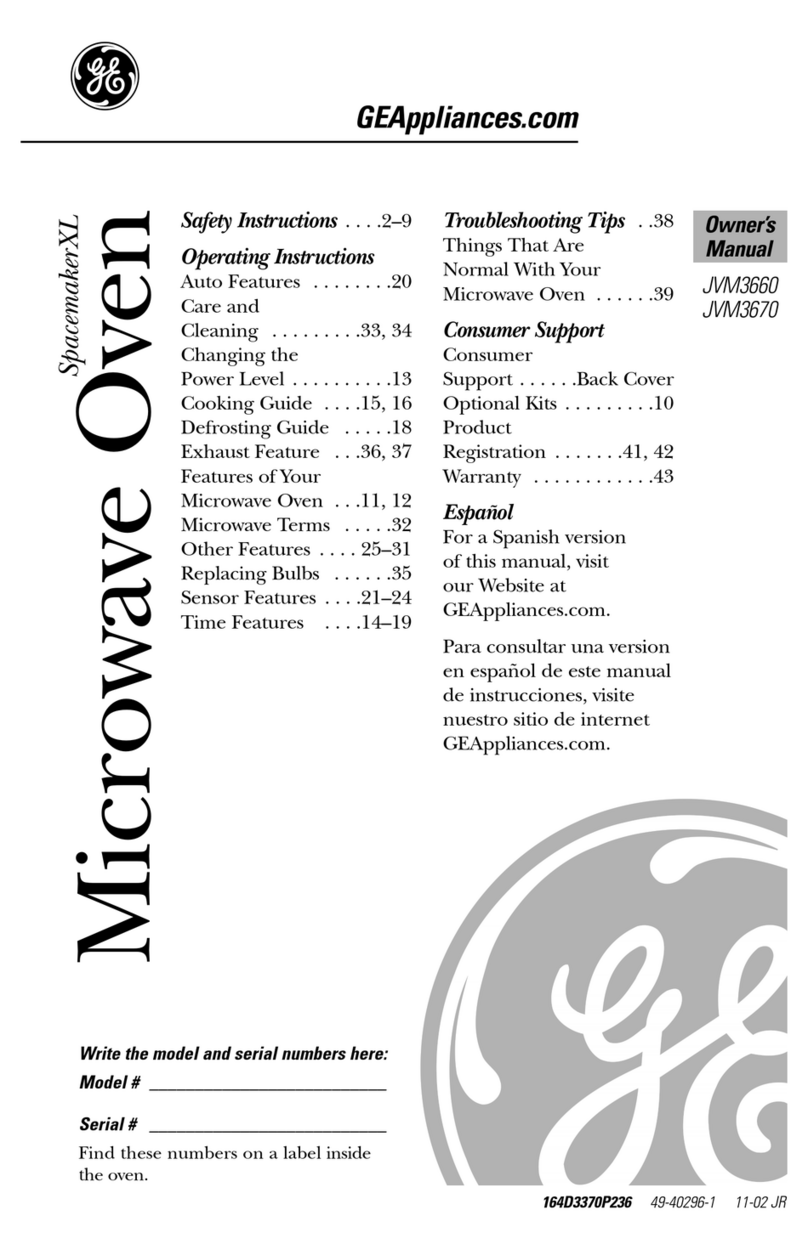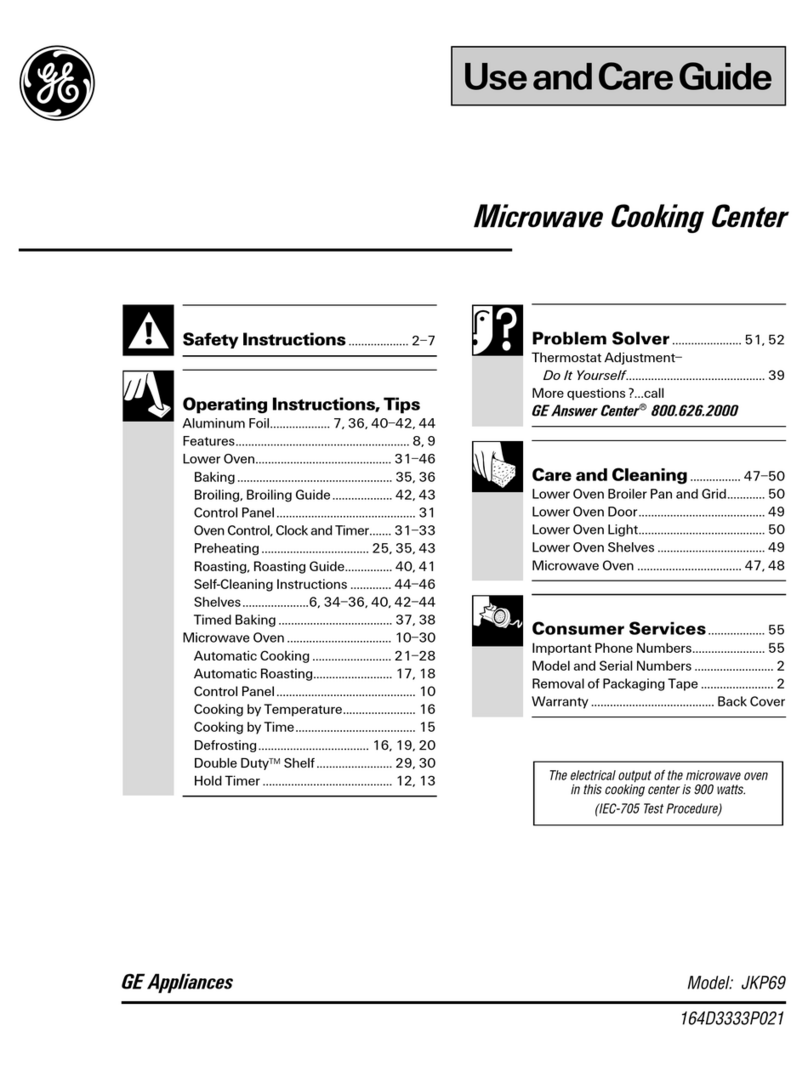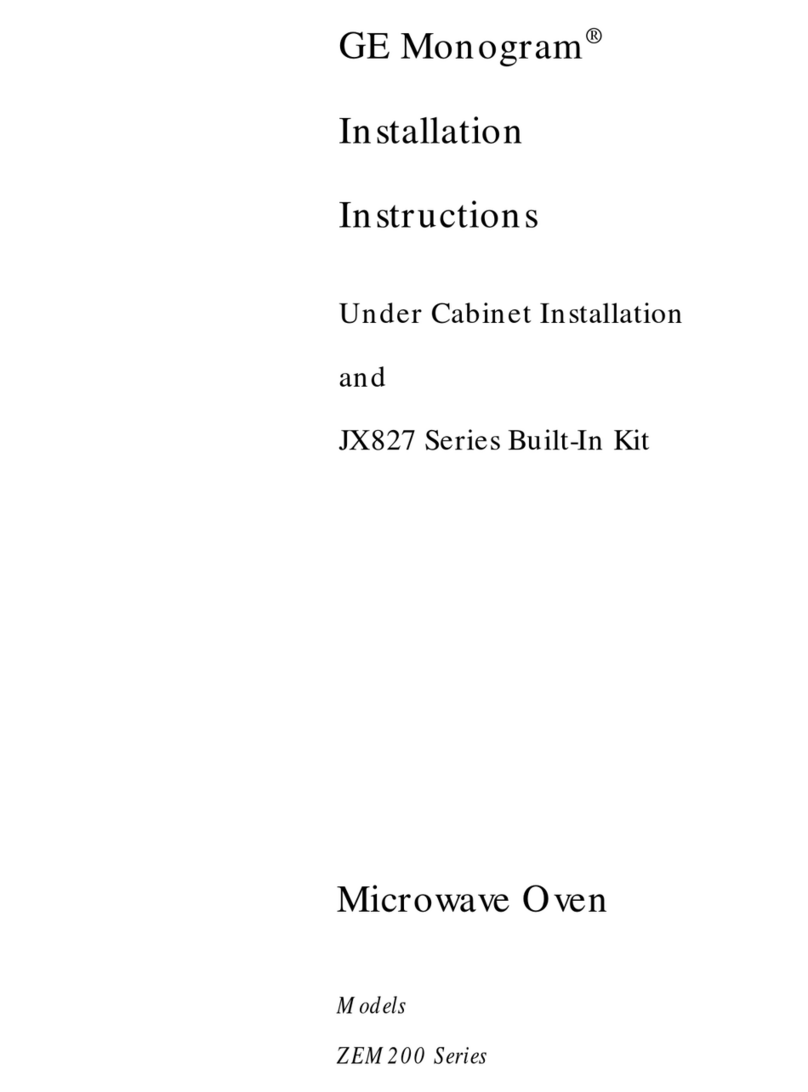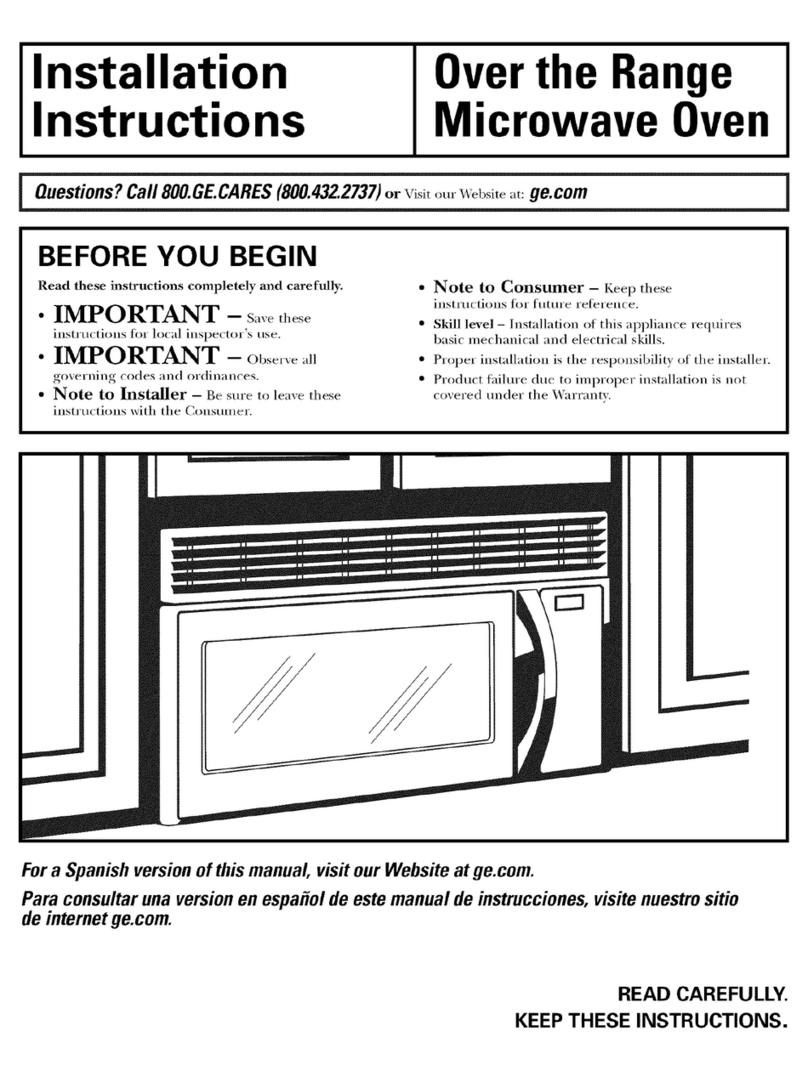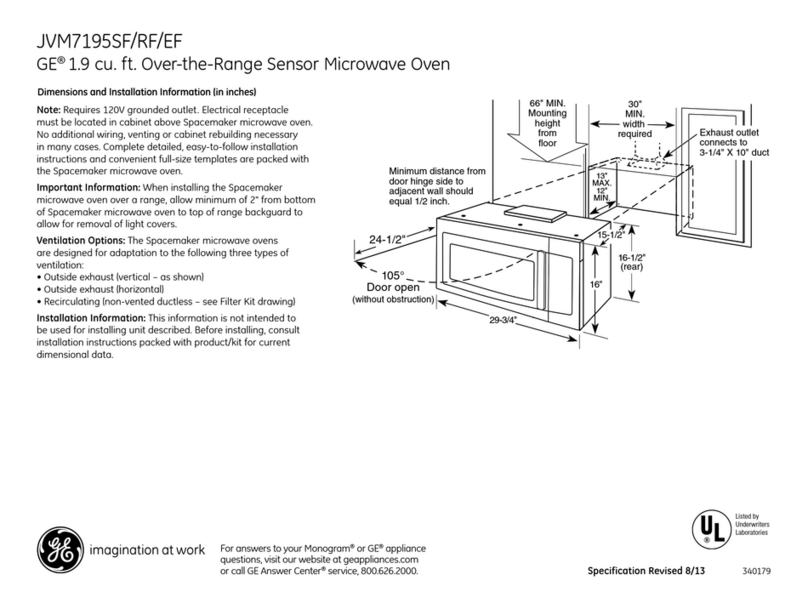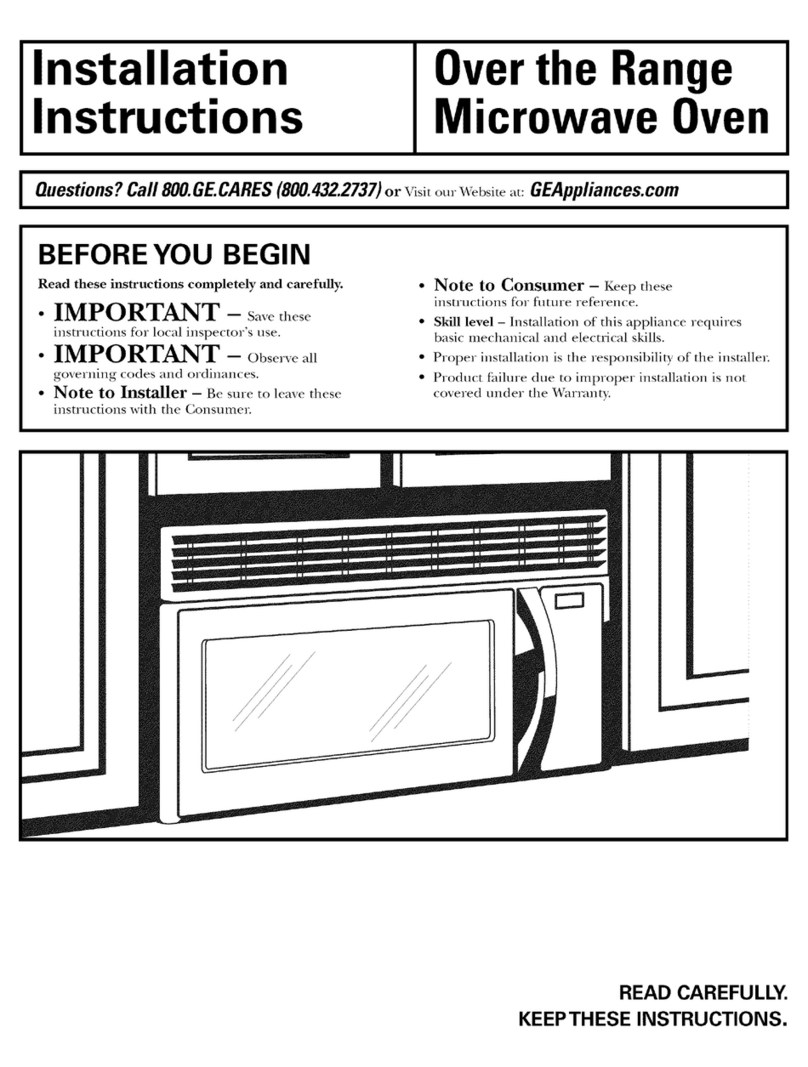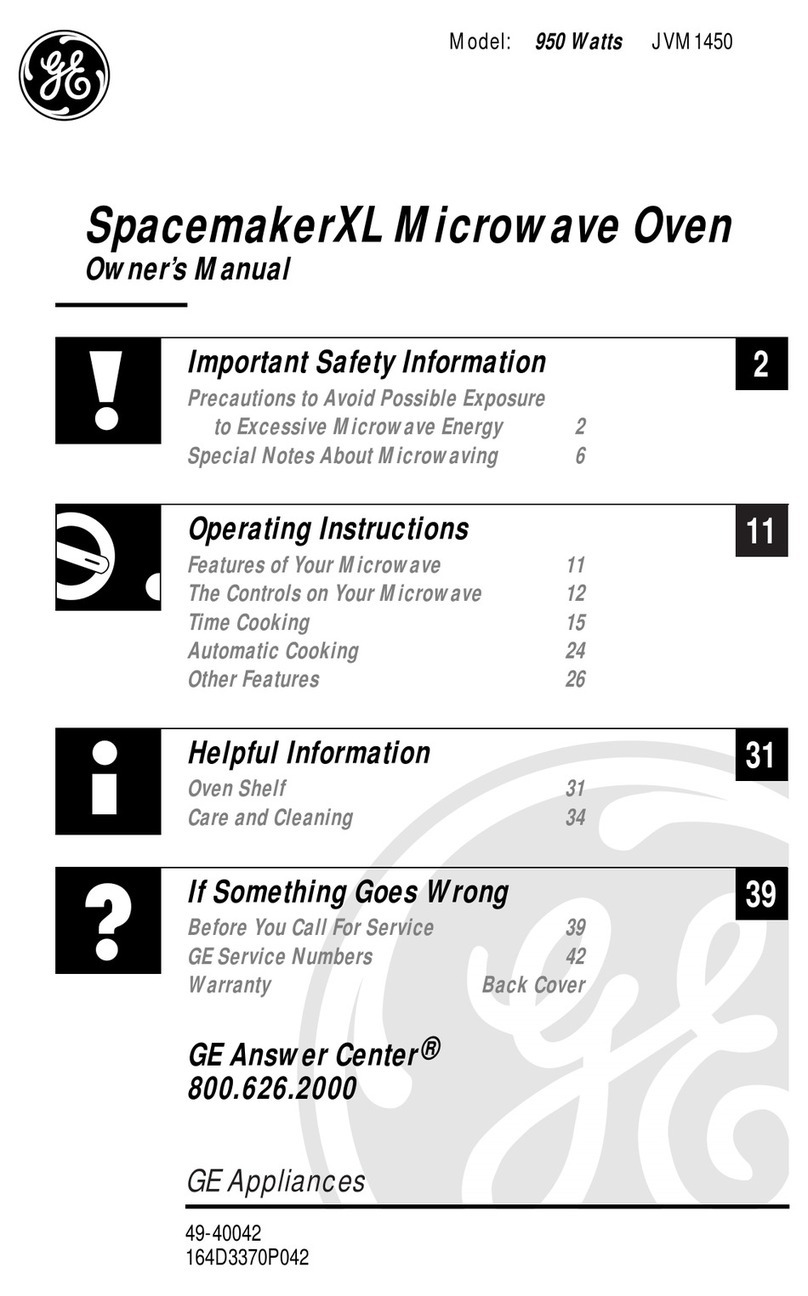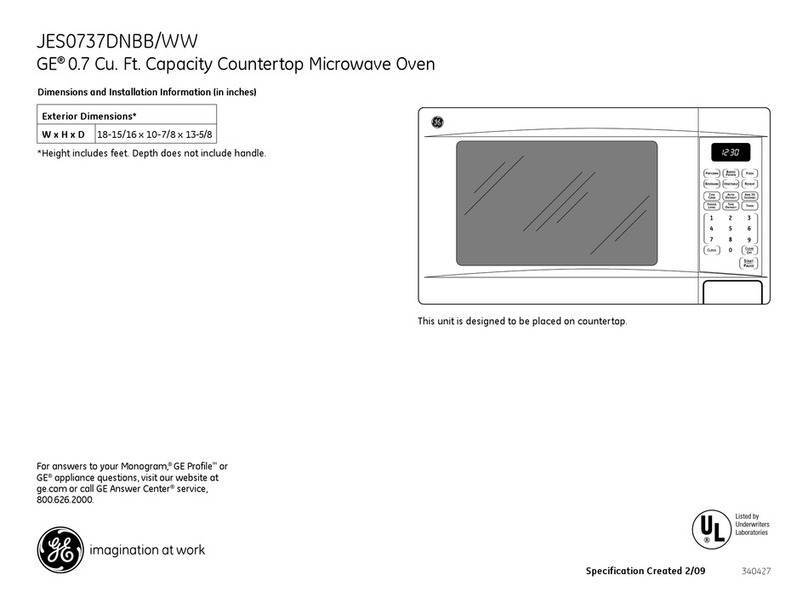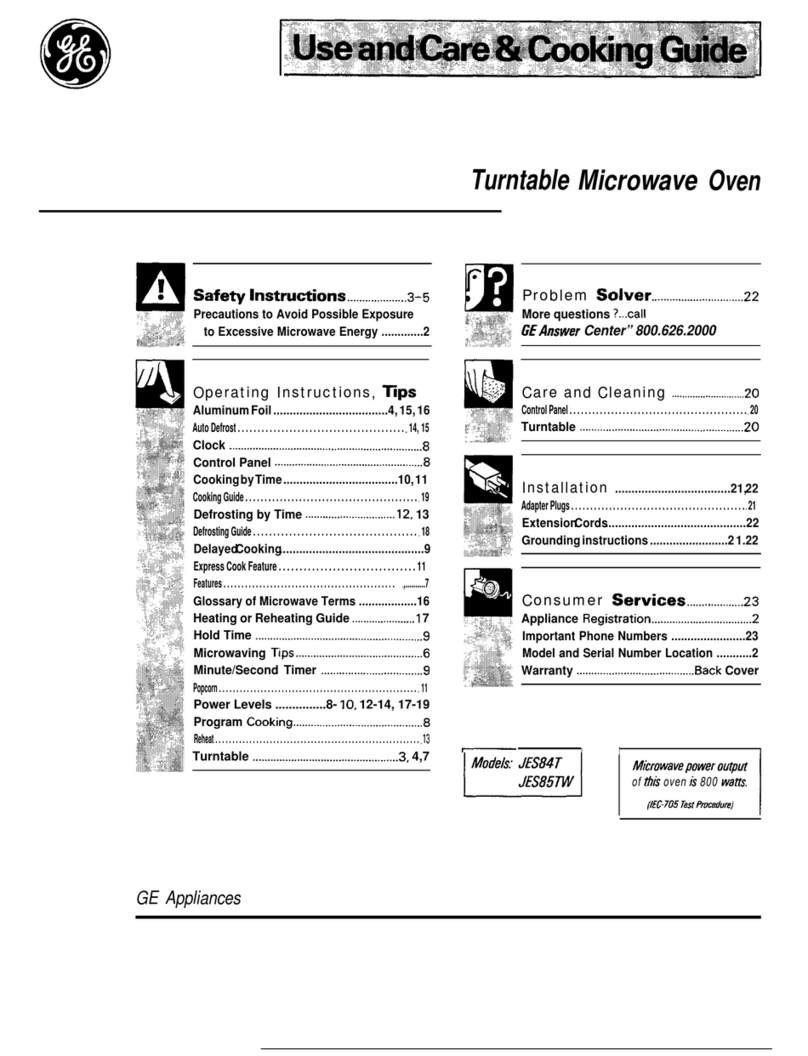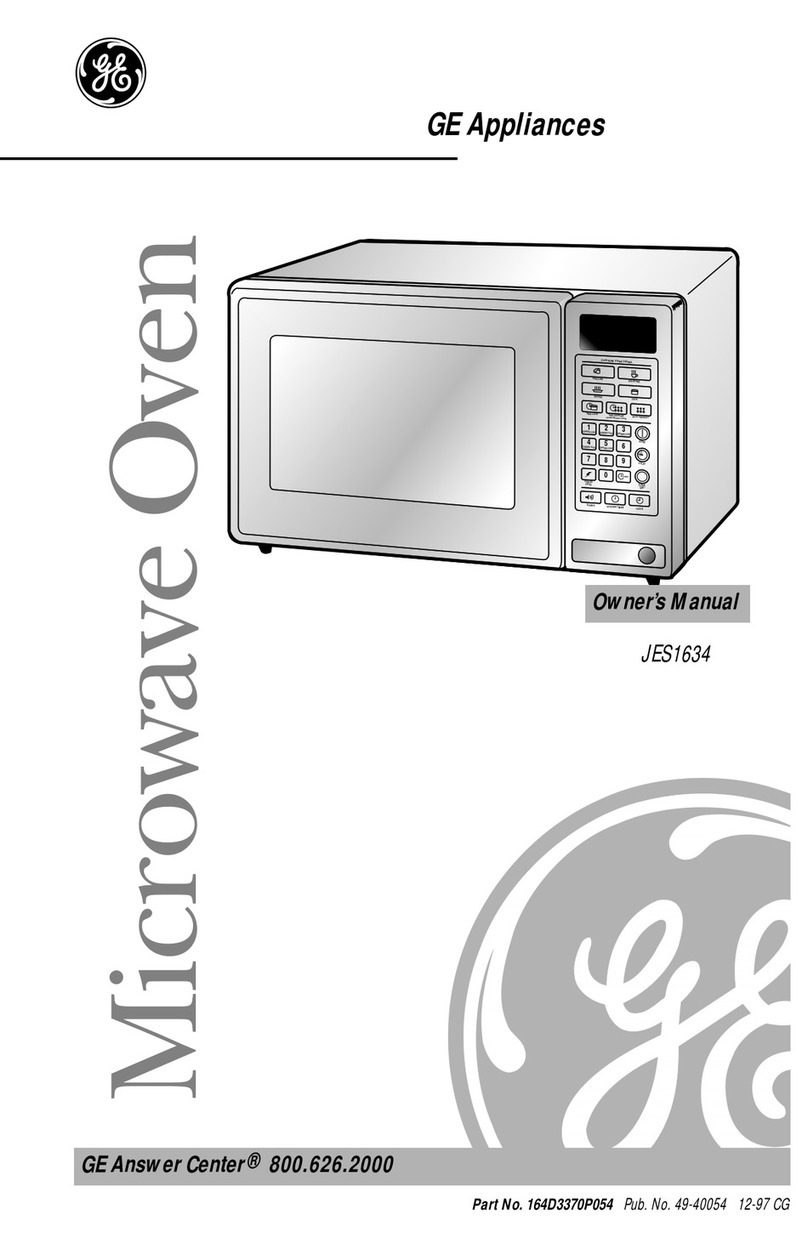3
SAFETY INSTRUCTIONS
SPECIAL NOTES ABOUT
MICROWAVING
ARCING
If you s arcing, pr ss th STOP/CLEAR pad and corr ct th probl m.
Arcing is the microwave term for sparks in the oven. Arcing is
caused by:
• Metal or foil touching the side of the oven.
• Foil not molded to food (upturned edges act like antennas).
• Metal, such as twist-ties, poultry pins or gold-rimmed dishes,
in the microwave.
• Recycled paper towels containing small metal pieces being used
in the microwave.
FOODS
• Do not pop popcorn in your microwave oven unless in a special
microwave popcorn accessory or unless you use popcorn labeled
for use in microwave ovens.
• Some products such as whole eggs and sealed containers—for
example, closed jars—are able to explode and should not be heated
in this microwave oven. Such use of the microwave oven could result
in injury.
• Do not boil eggs in a microwave oven. Pressure will build up inside
egg yolk and will cause it to burst, possibly resulting in injury.
• Operating the microwave with no food inside for more than a
minute or two may cause damage to the oven and could start
a fire. It increases the heat around the magnetron and can
shorten the life of the oven.
• Foods with unbroken outer “skin” such as potatoes, hot dogs,
sausages, tomatoes, apples, chicken livers and other giblets,
and egg yolks should be pierced to allow steam to escape
during cooking.
SAFETY FACT
SUPERHEATED WATER
Liquids, such as wat r, coff or t a ar abl to b ov rh at d
b yond th boiling point without app aring to b boiling. Visibl
bubbling or boiling wh n th contain r is r mov d from th
microwav ov n is not always pr s nt. THIS COULD RESULT
IN VERY HOT LIQUIDS SUDDENLY BOILING OVER WHEN THE
CONTAINER IS DISTURBED OR A SPOON OR OTHER UTENSIL
IS INSERTED INTO THE LIQUID.
To reduce the risk of injury to persons:
— Do not overheat the liquid.
— Stir the liquid both before and halfway through heating it.
— Do not use straight-sided containers with narrow necks.
— After heating, allow the container to stand in the microwave oven
for a short time before removing the container.
— Use extreme care when inserting a spoon or other utensil into the
container.
• Avoid heating baby food in glass jars, even with the lid off. Make
sure all infant food is thoroughly cooked. Stir food to distribute the
heat evenly. Be careful to prevent scalding when warming formula.
The container may feel cooler than the formula really is. Always test
the formula before feeding the baby.
• Don’t defrost frozen beverages in narrow-necked bottles (especially
carbonated beverages). Even if the container is opened, pressure
can build up. This can cause the container to burst, possibly
resulting in injury.
• Hot foods and steam can cause burns. Be careful when opening
any containers of hot food, including popcorn bags, cooking
pouches and boxes. To prevent possible injury, direct steam away
from hands and face.
• Do not overcook potatoes. They could dehydrate and catch
fire, causing damage to your oven.
• Cook meat and poultry thoroughly—meat to at least an INTERNAL
temperature of 160°F and poultry to at least an INTERNAL temperature
of 180°F. Cooking to these temperatures usually protects against
foodborne illness.
MICROWAVE-SAFE COOKWARE
Make sure all cookware used in your
microwave oven is suitable for
microwaving. Most glass casseroles,
cooking dishes, measuring cups, custard
cups, pottery or china dinnerware which
does not have metallic trim or glaze with a metallic sheen can be
used. Some cookware is labeled “suitable for microwaving.”
• If you are not sure if a dish is microwave-safe, use this test: Place in
the oven both the dish you are testing and a glass measuring cup
filled with 1 cup of water—set the measuring cup either in or next to
the dish. Microwave 1 minute at high. If the dish heats, it should not
be used for microwaving. If the dish remains cool and only the
water in the cup heats, then the dish is microwave-safe.
• If you use a meat thermometer while cooking, make sure it is safe
for use in microwave ovens.
IMPORTANT SAFETY INFORMATION.
READ ALL INSTRUCTIONS BEFORE USING.

